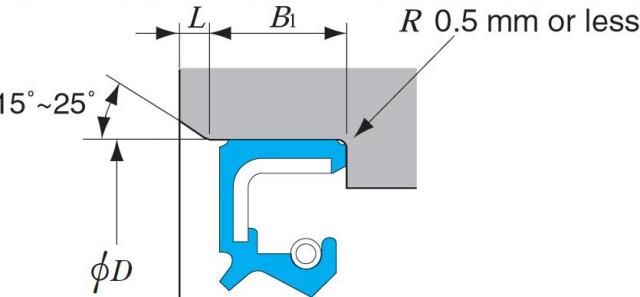Operating temperatures for engine oil seals (see Fig. 14.11 and cross-section of lip seal with garter spring in Fig. 14.22) vary widely, depending on engine design and location within the engine. Typically, the rear crankshaft seal is subjected to much higher temperatures than the front seal. Oil sump temperatures vary considerably, depending on provisions for oil cooling. This allows use of hydrogenated nitrile (HNBR), silicone, or acrylic elastomers for some seals in relatively low-temperature environments (120–140°C or 250–284°F). Standard fluoroelastomers (FKM), bisphenol-cured VDF/HFP/TFE terpolymers with 68–69% fluorine content, perform well in oil service up to about 160°C (320°F). More resistant fluoroelastomers are necessary for reliable long-term performance in more severe environments.
With spring type Secures stable sealing performance.
Replacing a crankcase side-cover gasket

An overview of the different standard types of oil seals and their main characteristics is shown below.
